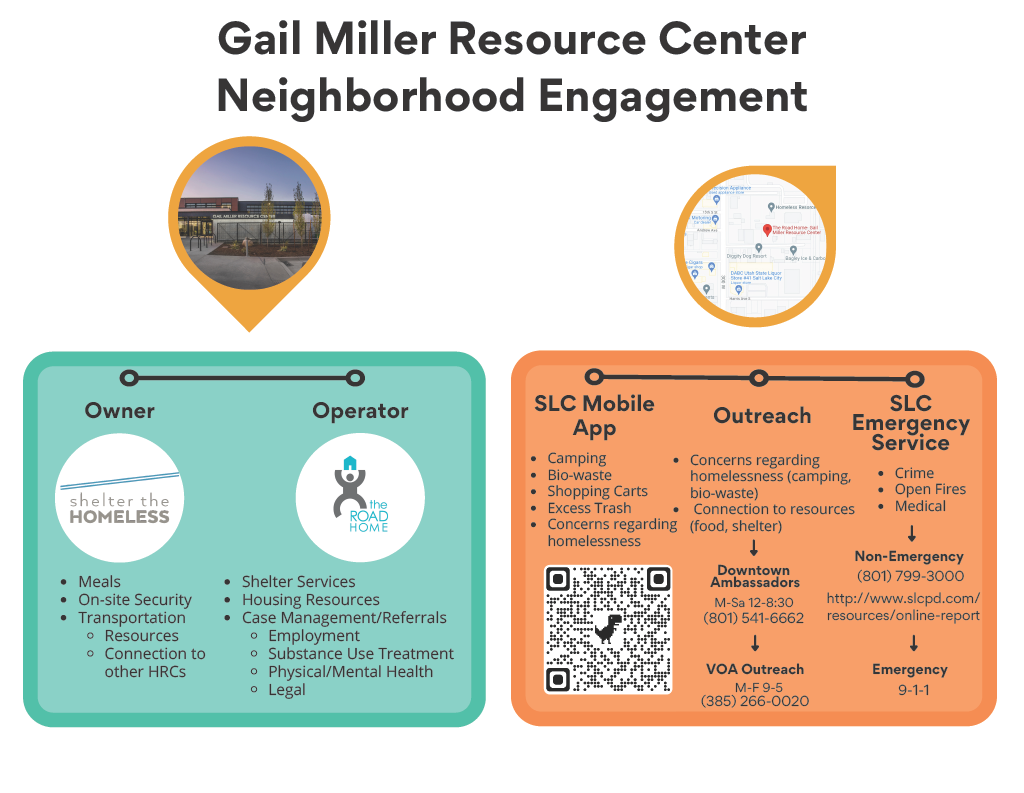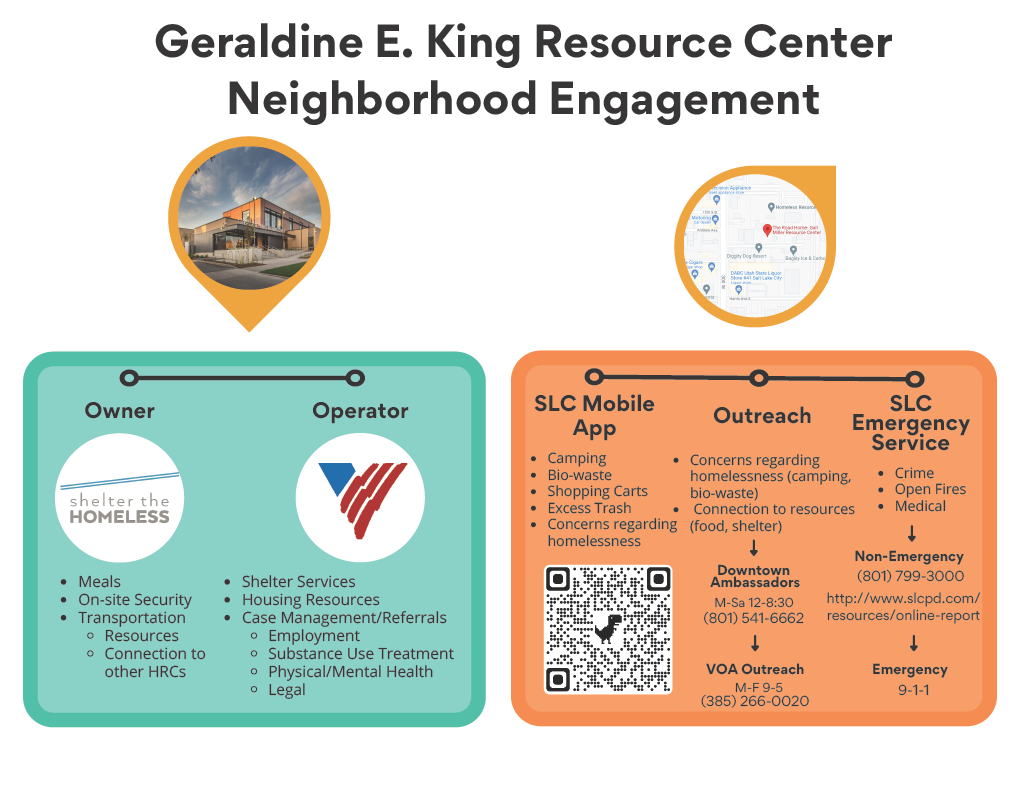If you or someone you know is experiencing or is at risk of experiencing homelessness, call: 801-990-9999.
Homeless Resource Centers and Other Shelters
Homeless Resource Centers in Salt Lake City
There are two Homeless Resource Centers (HRCs) in Salt Lake City. These are the Geraldine E. King Women’s Resource Center and the Gail Miller Resource Center.
The Gail Miller Resource Center provides 200 beds for homeless men and women in the community, as well as on-site supportive services to help those experiencing homelessness resolve their immediate crisis and rapidly return to stable housing. Available services include meals, clothing, hygiene, and a welcoming environment for service animals.
Address: 242 Paramount Ave, Salt Lake City, UT 84115
Hours: Open now
Phone: (801) 328-1894

Geraldine E. King Women’s Resource Center
The Geraldine E. King Women’s Resource Center provides emergency shelter to 200 homeless women in and around Salt Lake City each night. Beyond providing safe emergency shelter, this facility provides essential basic needs such as meals, clothing, hygiene items, a place for female clients to wash clothes and shower, as well as a welcoming environment for service animals.
Address: 131 E 700 S, Salt Lake City, UT 84111
Hours: Open now
Phone: (801) 893-6678

The State of Utah built a dashboard to show the current availability of beds at Homeless Resource Centers.
To take a virtual tour of what the two HRCs in Salt Lake City look like, watch this video.
Microshelter Community
The Microshelter is a new type of non-congregate shelter in Utah that provides emergency shelter for individuals who might not find stability at larger, congregate shelters. Following a successful pilot on City-owned property, 25 portable buildings were moved and reopened in the Fall of 2024 at a State-owned location on 700 West and are managed by SwitchPoint. The hard-shelled pods, which can house up to 50 people experiencing homelessness, feature lockable doors, power outlets, and heating and air conditioning as well as shared bathroom and shower amenities and some meals served on site.
We’re grateful for the partners and community efforts that made the pilot of this non-congregate model at 300 South & 600 West successful in 2023-24.
Winter Overflow Shelter
The State of Utah requires that counties develop plans to address the need for overflow shelter during the winter months. More overflow beds are being provided each winter due to increases in people experiencing homelessness. The overflow shelters are open 24 hours a day, 7 days each week.
2024-25 Locations
- West Valley City Winter Overflow – 200 beds
- St. Vincent de Paul – 65 (open from 7 p.m. to 7 a.m.)
- Microshelter Community – 50
- Geraldine E. King Resource Center – 50 additional
- Gail Miller Resource Center – 50 additional
- Pamela Atkinson Resource Center – 75 additional
Code Blue
In 2023, the state passed a law creating a “Code Blue Alert,” which takes effect when temperatures are expected to drop below 18 degrees (including wind chill) for two hours or more during a 24-hour period. The law allows a homeless shelter to expand its capacity by up to 35% to provide temporary shelter and can speed up intake procedures to get people checked in. Find Code Blue Alerts for counties across Utah at dhhs.utah.gov/code-blue-utah/.
Housing for Medically Vulnerable People
The Medically Vulnerable People (MVP) Program Facility is located in Sandy and provides interim housing and medical services to seniors and veterans experiencing homelessness with 165 beds. Salt Lake City has financially supported this facility and is grateful to Sandy City for being a part of regional solutions.
Housing
Housing Plans
In June 2023, the City Council adopted a new five-year housing plan called Housing SLC. The Plan sets goals and priorities for housing over the next five years. The goals will increase the number of housing units, especially deeply affordable housing, and will increase stability for households in the city.
In October 2023, the City Council adopted an anti-displacement strategy called Thriving in Place. The strategy contains 22 action items that will help keep people housed and will provide additional resources to households experiencing displacement pressures.
These two plans will increase the housing stock, especially affordable housing, and will increase stability for renter households. Together they will help keep people housed while also creating housing for individuals currently experiencing homelessness.
Permanent Supportive Housing
Permanent Supportive Housing (PSH) is housing that is deeply affordable and includes wrap-around services that people need, such as mental health counseling, medical treatment, and other services. Salt Lake City has added 200+ permanent supportive housing units in since 2020 and has 500 currently in the pipeline.
In fall 2022, the City joined partners and invested in new deeply affordable permanent supportive housing for seniors and veterans experiencing homelessness who earn less than $25,000. The 100 units at the Point Fairpark opened in May 2023, located at 130 N. 2100 West, and are operated by Switchpoint.
The Other Side Village
This tiny home village, affiliated with but separate from The Other Side Academy, helps individuals transition out of homelessness. Each tiny home is part of a community where individuals receive support and have opportunities for job training. The first homes opened to residents in December 2024, with hundreds more planned. The City plans to continue supporting the construction of more houses in the Village to provide deeply affordable housing.
Learn more on the Other Side Village website.